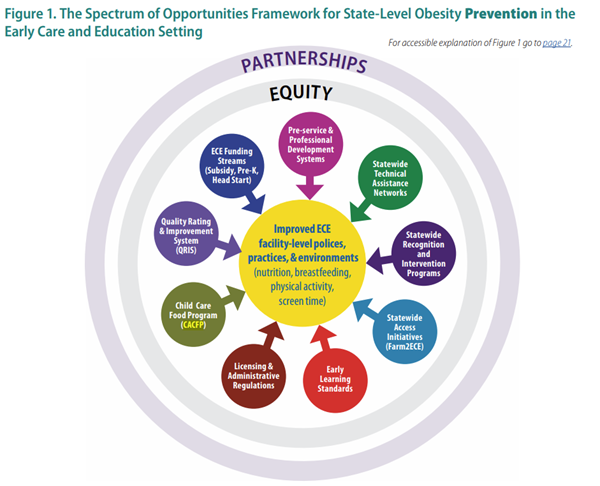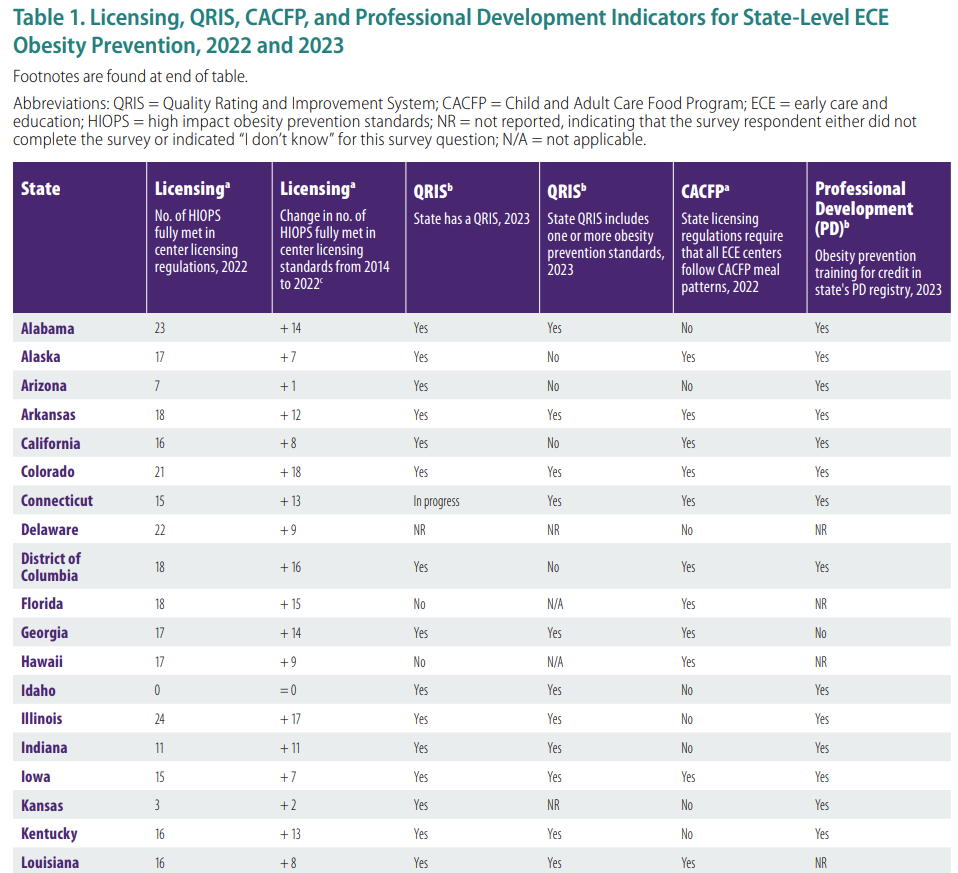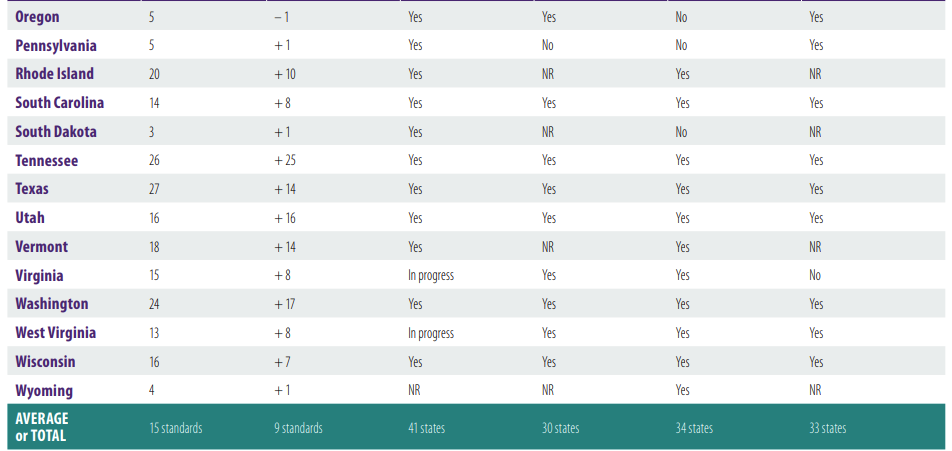CACFP Indicator for State-Level Obesity Prevention
December 19, 2023

The ECE State Indicator Report 2023 provides data on current ECE policies and activities related to healthy growth and obesity prevention. It expands the number of indicators in the 2016 report from 15 to 16. Nine indicators remained the same from 2016 to 2023, including indicators around licensing, facility-level interventions, Farm to ECE, and recognition programs. Seven indicators are new or modified, including indicators around the Child and Adult Care Food Program (CACFP), professional development, and technical assistance networks.
Why It Matters
The inclusion of the CACFP as an indicator for obesity-prevention shows that the CACFP is an important, recognized factor for proper development in the earliest stages of life. Not only do meals provided through the CACFP reduce food insecurity, but their high-nutrient components help to prevent diet-related diseases and create positive eating habits.
Key Findings:
- 47 states have increased the number of obesity prevention standards in their licensing regulations since 2014.
- 34 states support CACFP meal patterns through center-based licensing regulations.
- 33 states have an obesity prevention intervention for ECE programs.
- 30 states offer a tool that helps ECEs assess their nutrition, physical activity, breastfeeding, and Farm to ECE policies and practices.
- 43 states report supporting Farm to ECE activities through state or local activities.
Spectrum of Opportunities Framework
To help states and communities support ECE providers to meet these national standards, CDC developed The Spectrum of Opportunities Framework for State-Level Obesity Prevention in the Early Care and Education Setting (Spectrum of Opportunities).2 This framework was updated in 2018 (Figure 1) and is supported by an action guide.3 It identifies how states can embed healthy growth and obesity prevention into their ECE systems, with an emphasis on partnerships and equity.

CACFP Indicator for Obesity Prevention
Children in full-time ECE programs are provided a substantial portion of their daily food while in care. In 2020, about 4.2 million children received meals and snacks through CACFP each day.
Eligibility for ECE programs to participate in CACFP is based on the income levels of enrolled children’s families or of the overall community. CACFP can thus be a way to help address issues related to health equity and child food and nutrition security.
CACFP regulates meal patterns and portion sizes, provides nutrition education, and offers sample menus and training in meal planning and preparation to help ECE providers comply with nutrition standards. Because CACFP meal pattern standards undergo scientific review and revision, they represent a gold standard by which states can set minimum requirements for licensed child care providers. Requiring licensed ECE centers to follow CACFP meal patterns, regardless of CACFP participation, can help set comprehensive dietary standards for children in center-based care, regardless of whether their individual ECE center participates in CACFP.



For more information, read the 2023 Early Care and Education State Indicator Report. The study was published by the Division of Nutrition, Physical Activity, and Obesity at the Center for Disease Control and Prevention National Center for Chronic Disease Prevention and Health Promotion.
